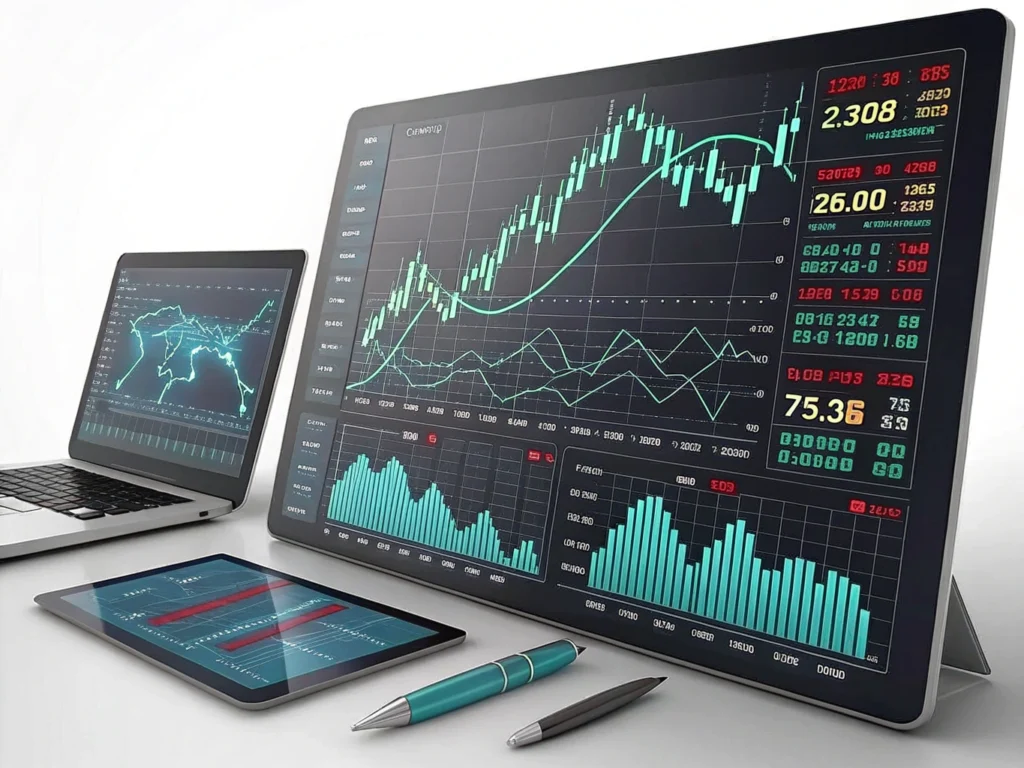
WHAT IS A STANDARD FOREX ACCOUNT?
A standard account is the entry-level option offered by most brokers. It provides market access through a dealing desk, with fixed or variable spreads and no commissions. Traders execute orders against the broker’s inventory, often benefiting from deeper liquidity but accepting potential conflicts when the broker acts as counterparty.
Basics of a Standard Account
- Dealing Desk Execution: Orders routed through the broker’s internal system.
- Spread Structure: Typically wider than non-dealing models, but incorporates costs into the quoted spread.
- Leverage & Margin: Standard leverage ratios (e.g., 1:100) with margin requirements set by the broker.
When to Use a Standard Account
- Newcomers learning platform mechanics.
- Traders preferring fewer line-item fees.
- Strategies that tolerate modest spreads and potential re-quotes.
WHAT IS STP – STRAIGHT THROUGH PROCESSING?
Straight Through Processing (STP) eliminates manual intervention: trades flow directly to external liquidity providers. This model seeks transparency by matching client orders with interbank pricing, removing the broker’s trading desk from execution.
How STP Works in Forex
- Order Placement: Client sends market order to broker.
- Automatic Routing: Broker’s system forwards it to tier-one banks or other LPs.
- Execution & Confirmation: A counterparty fills the order at the best available price; execution details return to the trader without human handling.
STP Account vs. Traditional Execution
| Feature | STP Account | Dealing Desk (Standard) |
| Order Routing | Automatic to LPs | Internal “bucket” |
| Potential Conflict | Low | Higher (broker as counterparty) |
| Spread Composition | Raw + markup | All-in spread |
| Re-quotes | Rare | Possible |
ADVANTAGES OF AN STP ACCOUNT
STP structures aim to deliver fairer pricing and quicker fills for active market participants.
Direct Market Access
Streamlined link to interbank liquidity pools enables real-time quotes and reduces slippage.
Faster Order Execution
Automated routing cuts out manual steps, resulting in tighter execution windows—especially in volatile conditions.
Reduced Conflict of Interest
Since the broker does not act as the opposing side, there’s less incentive for order manipulation or requotes.
STP VS ECN AND MARKET MAKER BROKERS
Choosing the right model means weighing transparency, cost, and execution style.
No Dealing Desk vs. Dealing Desk
- No Dealing Desk (STP/ECN): Orders go straight to liquidity providers.
- Dealing Desk: Broker fills orders internally, potentially controlling pricing.
STP vs. ECN Brokers
| Aspect | STP | ECN |
| Pricing | Aggregated LP quotes + markup | Raw spreads + fixed commission |
| Minimum Volume | Often no minimum | Usually higher (e.g., 0.1 lots) |
| Transparency | Moderate | High (order book visible) |
Identifying Your Broker’s Model
- Review account terms for spread and commission breakdown.
- Check for visible depth-of-market (ECN feature).
- Note any re-quote policies—STP rarely requotes, dealing desks may.
THINGS TO CONSIDER WHEN CHOOSING AN STP ACCOUNT
Selecting the optimal STP offering requires attention to pricing, partners, and personal style.
Pricing and Spread Structures
Compare raw spreads plus markups versus all-inclusive quotations. A transparent fee schedule is key.
Quality of Liquidity Providers
Top-tier banks and institutional sources tend to offer more competitive pricing and deeper pools.
Alignment with Your Trading Goals
Ensure execution speed and cost structures suit scalping, swing, or longer-term approaches.
CONCLUSION ON STP ACCOUNT IN FOREX
An STP account bridges traders directly to market makers and banks, blending efficiency with reduced counterparty risk. By understanding its mechanics and comparing broker offerings, you can harness faster fills and clearer pricing—especially valuable for those pursuing precise, execution-sensitive strategies.
FREQUENTLY ASKED QUESTIONS
What does STP mean in trading?
STP stands for Straight Through Processing, a system that routes orders automatically to external liquidity providers without internal dealing-desk intervention.
What is an STP broker?
An STP broker forwards client trades directly to interbank markets or liquidity pools, earning revenue via spread markups rather than acting as counterparty.
How does STP differ from ECN?
STP brokers aggregate multiple LP quotes and add a markup; ECN platforms display raw spreads and charge a separate commission, often with visible order-book data.
Which is better, STP or ECN?
It depends on your style: ECN suits traders valuing maximum transparency and small volume thresholds; STP appeals to those seeking simpler fee structures and lower entry requirements.
Are NDD and STP brokers the same?
NDD (No Dealing Desk) is an umbrella term that includes both STP and ECN models—each routing orders without a dealing desk but varying in fee and transparency details.

